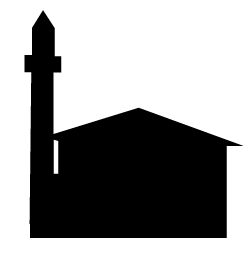Chvana
Chvana Mosque
Chvana mosque is the center of a courtyard complex that also includes a large minaret, madrasa, and an outdoor ablutions fountain protected by a domed enclosure (in the site plan, this ablutions area is the red octagonal building on the left). During the Soviet period, the complex served as a hospital for Chvana and surrounding villages. A 1997 renovation covered any surviving murals in new paneling and sponge painting, but the original dome—with its grapevines and roses strikingly reminiscent of European interior decor—remains untouched. Similar motifs adorn the dome covering the 1905 ablutions fountain, but greater exposure to the elements and renovations using contemporary synthetic materials have caused extensive paint peeling. The renovation also coated both the fountain dome and the interior carvings (predominantly of the template-based variety of the late nineteenth century) in garish new paint, obscuring some of the original details. Structural beams below the roof and columns to the foundation bear the herringbone and geometric carving patterns typical of earlier mosques, which suggest that Chvana was built on the site of a previous structure, or that it was subject to an extensive reconstruction in 1894-1895. The foundation columns retain traces of red and blue paint, providing evidence of early color schemes and pigment availability.
DISTRICT: Shuakhevi
LOCATION: 41°40'36.1"N 42°09'41.3"E
POPULATION: 328
CONSTRUCTION DATE: 1894-1895 (hijri 1311-1312)
RENOVATION DATE(S): 1997
CRAFTSMEN: Unknown
MINARET: Yes

